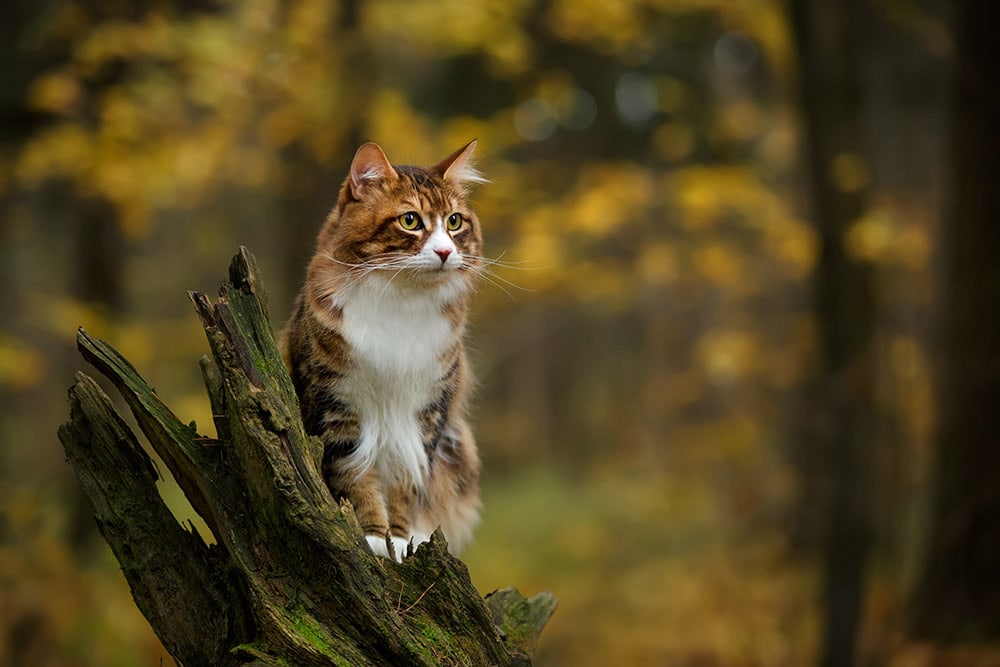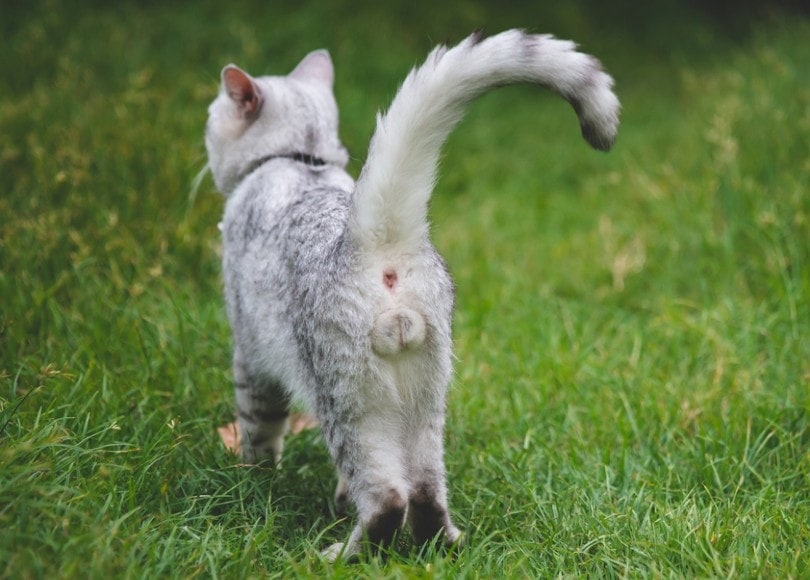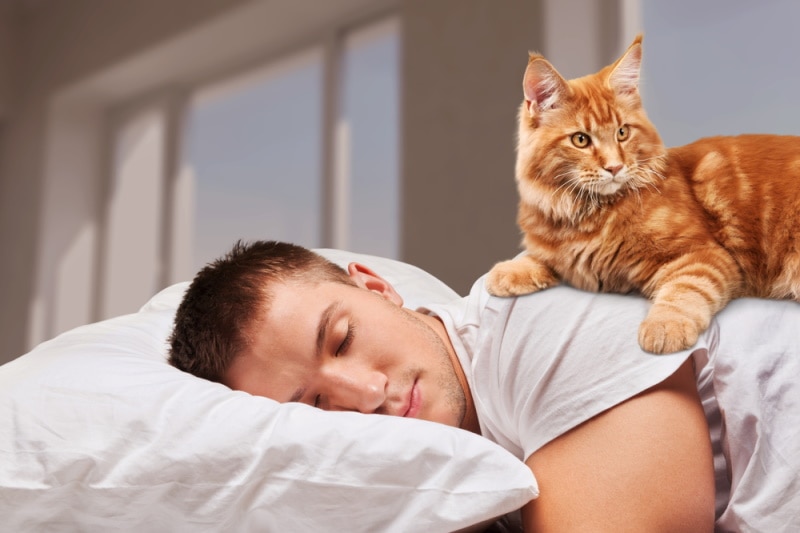8 Munchkin Cat Breeds & Colors (With Pictures)

Updated on
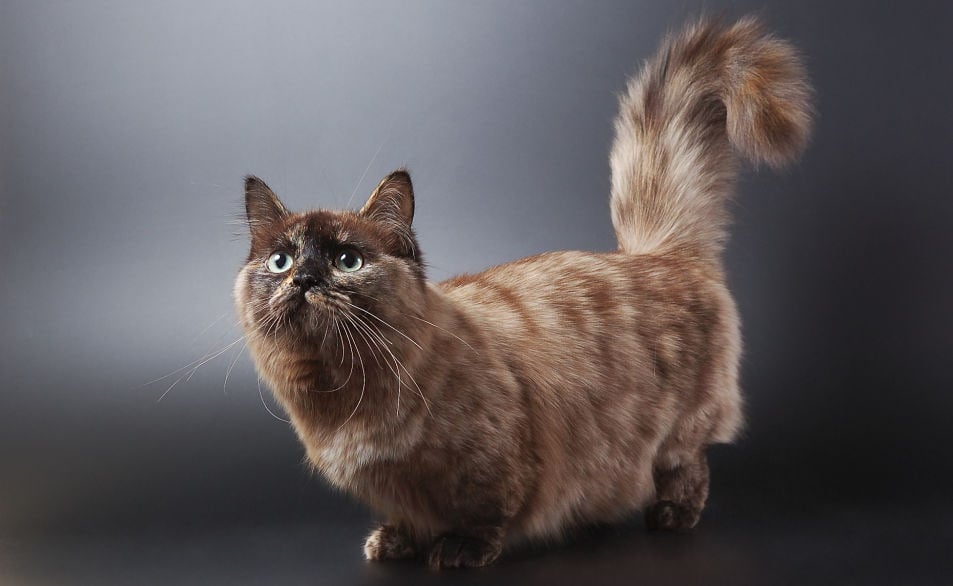
Munchkin cats are energetic, a fun-loving breed known for their short legs. Initially sighted as early as the 1930s, this breed resulted from a spontaneous natural genetic mutation. The modern-day Munchkin cat was discovered in Louisiana in 1983 by a music teacher named Sandra Hockenedel.
Breeders have continued breeding Munchkin cats despite the controversies around them regarding their health and genetic mutation-related issues. With proper care, this breed has an average lifespan of 12–15 years. Physically, the most distinguishing feature of this breed is its legs. The limbs appear bow-legged and are half as long as a regular cat’s limbs. The medium-sized cat is firmly muscled with a well-rounded chest.
Munchkin cats come in a variety of patterns, colors, and fur lengths. Over the years, they have been crossbred with other varieties, creating different looks.
Here are the most common Munchkin cat breeds and colors.
Munchkin Cat Breeds
1. Minskin
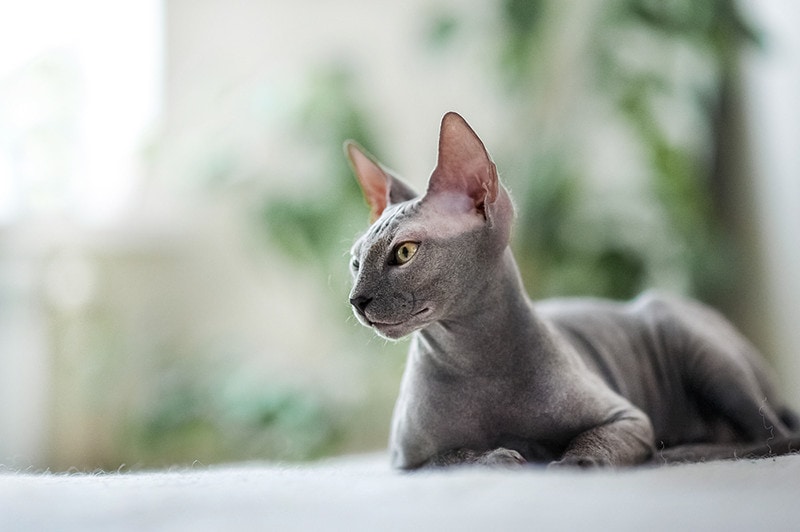
Developed by Paul McSorley in 1998, this breed hails from Boston, Massachusetts. The Minskin was created by crossbreeding the Munchkin cats with three other breeds, the Devon Rex, Burmese, and Sphynx cats. This hybrid cross resulted in a cat with a stunning light peach fuzz coat.
Because of its diverse background, this breed is strange-looking with tiny legs and an unusual lack of fur, which has made it quite popular. It’s hairless on its entire body except for the feet, face, ears, and tail. Individuals who love the hairless Sphynx cat are more likely to love this breed as they almost look similar except for short legs.
The Minskin has penetrating blue eyes, a low body, and stubby little legs. Due to the lack of fur, it’s hypoallergenic, making it a perfect cat for people with allergies. Even with the crossbreeding across four different breeds. Minskins are relatively healthy, with a life expectancy of 12 to 14 years. However, their close relation to the Sphynx cat makes them prone to a heart condition, Hypertrophic Cardiomyopathy (HCM).
As intelligent breeds, they can be mischievous and curious, which is entertaining. They are also highly alert and social; therefore, they will most likely interact with strangers. In addition, they are fun, loyal pets that adore their families, especially kids. They also get along well with other pets.
Since they have a small amount of hair, the Minskin cat doesn’t require brushing. However, you’ll need to bathe them once in a while to take care of the skin. Minskins are relatively small and weigh from 2 to 6 pounds.
2. Skookum
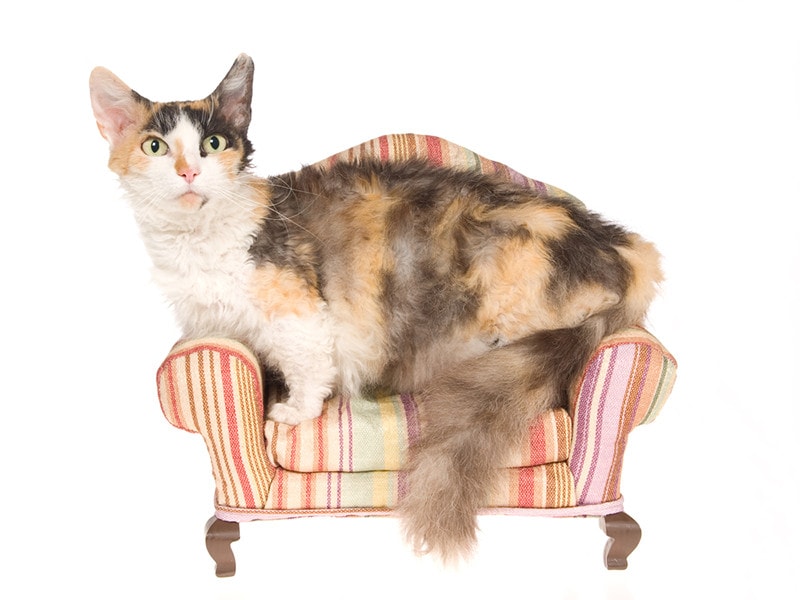
The Skookum cat got created by crossbreeding a Munchkin cat and a LaPerm cat. Established by Roy Galusha in the 1990s in the US, this breed picks similar features from the LaPerm, such as the curly coat and short legs from the Munchkin. The name Skokuum comes from a Native American tribe, Chinook, and means something brave, durable, and powerful.
They have a stunning, attractive fur coat that appears like natural, medium-length beach waves. Skokuums have long, puffy tails and short legs with different coat patterns and colors. It has a distinctive cat color but stands out as a curly-coated dwarf cat. Female cats have looser coat curls, while males are kinkier.
As one of the liveliest crossbreeds, this breed is affectionate, social, and lovable. They are playful and love to run around the house. Skokuums are an excellent choice if you have children or have strangers around as they are calm and sweet and love to cuddle up. Because of these characteristics, they are perfect for large families with multiple pets.
The Skookum cat has an average lifespan of 10 to 15 years. Over this period, they remain relatively apart from conditions associated with the Munchkin cats. The average weight ranges from 3 to 7 pounds. Despite having a curly fur coat, this breed is very low maintenance. It would help if you brushed their coat at least once or twice a week to avoid matting.
3. Bambino
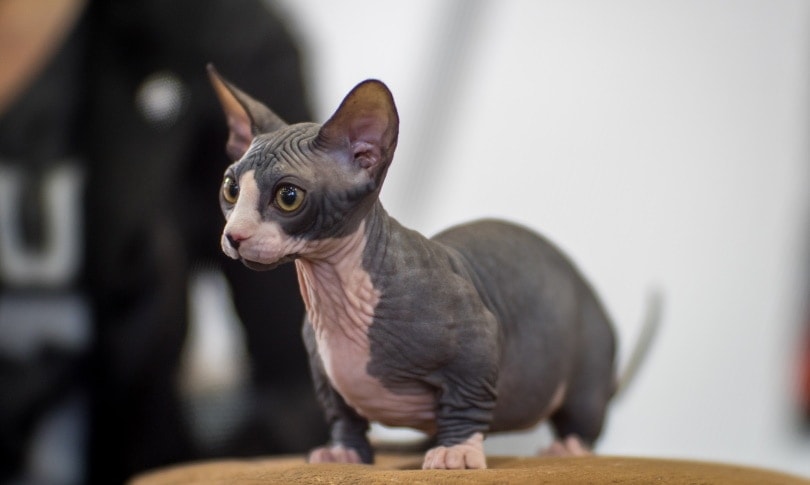
The Bambino cat is a hybrid resulting from a Munchkin and a Sphynx cat crossbreed. Established by Pat and Stephanie Osborne in 2005, this breed has short legs from the Munchkin parent and is hairless, just like the Sphynx parent. With completely hairless skin, this breed takes varying skin colors but typically will have shades of cream or black. They’ll need extra care due to the exposed skin.
You have to wipe them to eliminate oily residues frequently. If you go with them outside in direct sunlight or cold, they need sunscreen or clothes. They also need regular baths to keep the skin healthy at all times. Bambinos are playful and will constantly run around the house. They are also friendly and affectionate, making them perfect for snuggles and cuddles.
When taken care of well, Bambinos tend to live for about 12–14 years. However, they are prone to a genetic heart condition called Hypertrophic Cardiomyopathy (HCM), inherited from the Sphynx side.
Bambinos are small in size and weigh an average of 4 to 9 pounds.
You might also be interested in: How Much Does a Munchkin Cat Cost?
4. Dwelf

Originally from the US, the Dwelf cat is a crossbreed between a Munchkin, a Sphynx, and an American Curl cat. A rare breed, Dwelfs are hard to find and can be so expensive. In terms of physical appearance, they pick key traits from each parent, short legs from the Munchkin, hairlessness from the Sphynx, and curled ears of the American Curl.
The name Dwelf got its name from dwarfs and elves because of their unusual looks. This breed weighs approximately 4–7 pounds and is prone to skeletal and joint problems and genetically inherited medical conditions. Dwelfs are very outgoing and packed with high energy. They are mischievous and will enjoy climbing, jumping, and running around your home. Because of their personality, they love human companionship.
Like Bambinos, Dwelfs need care and maintenance. Because of their hairlessness, these breeds are prone to sunburn when exposed to direct sunlight. They also need to be clothed to keep warm during winter. In addition, you need to bathe them regularly to keep their skin healthy and clean.
- See also: Rare Cat Breeds You’ll Want to Know
5. Genetta
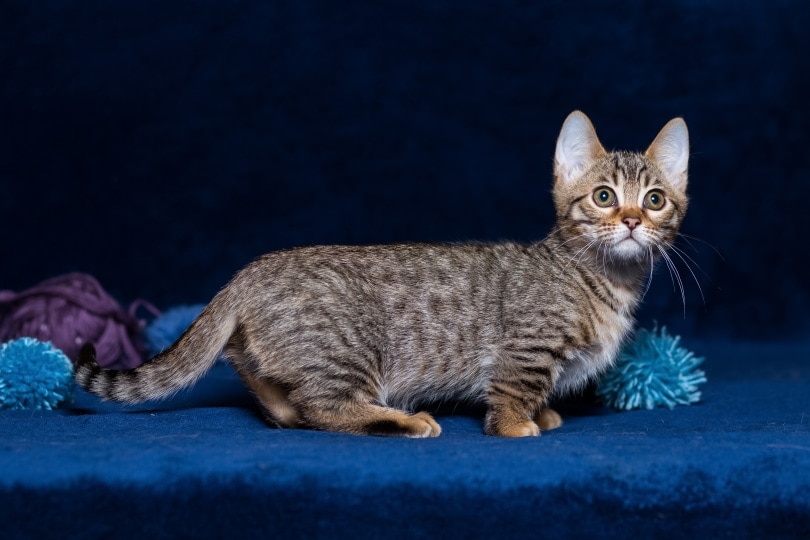
This breed got its name from a spotted wild cat in Europe, the African Genet. A crossbreed between a Munchkin, a Bengal, and a Savannah cat, the Genetta cat has a unique marble pattern or spots, making it one of the most distinguishable munchkin breeds. The breeding aimed to create wild cats like the Genet with an untamable personality.
From its parent breeds, the Genetta inherited the stubby legs of the Munchkin cats and the exotic, spotted coat of the Bengal and the Savannah. From this gene mixture, they look like little tigers. Their origin is attributed to Shannon Kiley from Pawstruck Cattery in Texas, who bred the first Genetta in 2006.
These cats have excellent temperaments and make fantastic playmates for kids and other pets. They love to cuddle and crave attention from their families; therefore, they don’t like being left alone for extended periods.
Genetta cat breed weighs between 4 to 8 pounds, and their average lifespan is about 12 to 16 years. They tend to live longer than the typical cat breeds. They need moderate maintenance that involves brushing their fur coat to avoid matting.
6. Kinkalow
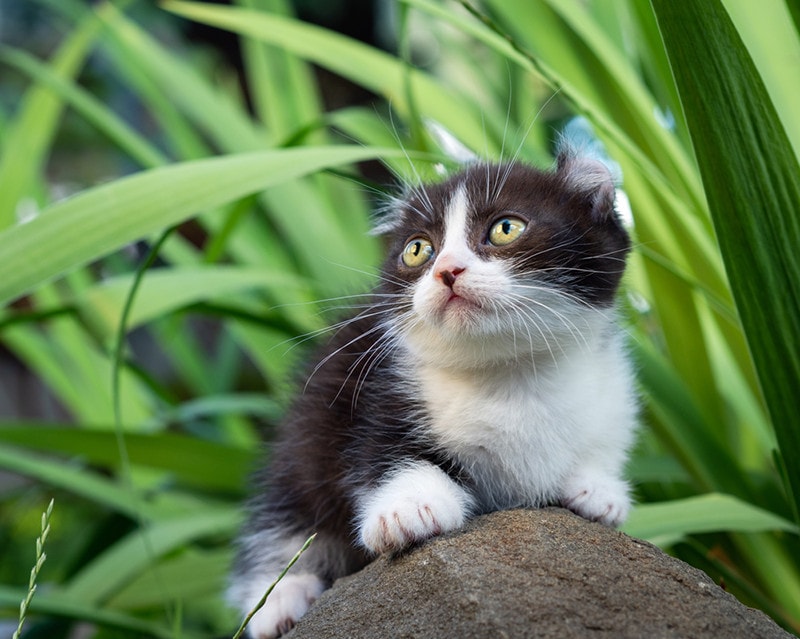
Terri Harris from Florida established the Kinkalow breed in 1994. This breed got its name from the word Kink- for their kinky ears and low- for their short legs. A crossbreed between an American Curl and a Munchkin cat, they are characterized by the short legs of the Munchkins and the curled ears of the American Curl.
Kinkalows are typically Dwelfs with fur. Their adorable curled ears and low bodies with tails that exceed their length make them appear shorter. Some cats in this breed don’t develop curly ears but will carry the gene. Because this breed was experimental, they are rare to find. Their coats develop varying colors, which makes their physical appearance unique.
Kinkalow cats are known for their playful nature. However, they aren’t just troublemakers; they love spending time with their owners and snuggling. If you’re looking for a cuddle buddy that will get along with your kids, Kinkalows are a perfect choice.
This breed usually weighs between 3 to 7 pounds and has an average lifespan of about 12 to 15 years. During this period, you need to schedule weekly brushing sessions to remove knots and tangles from its fur coat. Kinkalows are typically healthy breeds, but their ears require frequent cleaning to prevent infections.
7. Lambkin
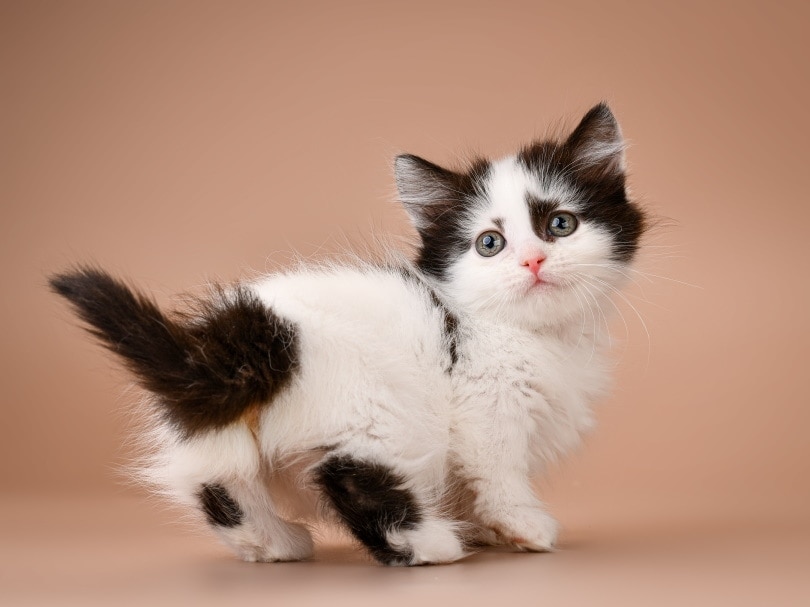
The Lambkin cat is a crossbreed of a Munchkin and a Selkirk Rex cat. From its parent breeds, it inherits the short stubby legs and the curly coat. This breed was founded by Terri Harris in 1991, who is also behind the Kinkalow breed.
The name comes from their wooly coat, similar to that of a young lamb. Lambkin coats are super soft and require brushing at least every other day. Because of this, these breeds need a lot of maintenance to keep the fur coat healthy and clean. In addition, they also need a regular bath to get rid of any dirt stuck on the coat.
Despite inheriting the parent traits, not all cats will develop the curls of the Selkirk. Some will tend to have straight hair like a Munchkin cat.
Their personality is friendly, fun, and playful. These breeds have exciting attributes and enjoy following you around the house because they don’t like staying alone. Therefore, if left alone for extended periods, they will tend to act out and get destructive around the house. To stop these erratic behaviors, avail toys to keep them engaged. It’s one of the cats with the highest average lifespan of about 15 to 20 years. It’s also among the heaviest Munchkin breeds weighing between 5 and 9 pounds. As one of the newer cat breeds, Lambkins are difficult to find.
8. Napoleon
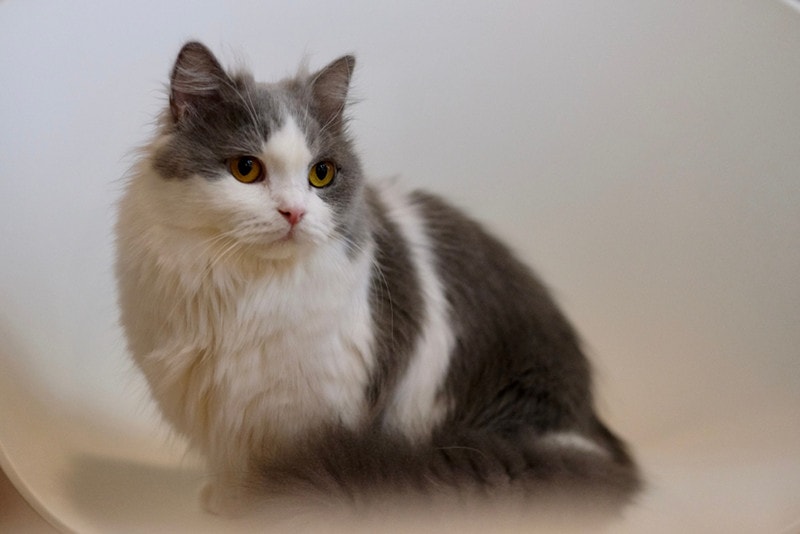
The Napoleon cat breed was created by crossing the Munchkin cats and Persian cats. It was developed in 1995 by Joe Smith and has become one of the most popular cat breeds. Their appearance combines the tiny legs of the Munchkin and the short snout and adorable face of the Persian.
These dwarfed cats are typically medium to long-haired and come with coats in any color variety common in domestic cats today. In addition, they have circular faces with large, round penetrating eyes.
Their personality is a combination of sweet, friendly, and docile. Although these cats aren’t as active, they are still playful and will run around your house from time to time. They love the company of their owners and hate being alone. Because they are sociable, they’ll get along with small children and other pets in your home. Napoleons love befriending strangers that come to your house. Make sure they can get a lot of human interaction before you get a Napoleon for your home.
The grooming and level of care depend on the type of fur coat your cat has. Long-haired breeds need a daily brushing session, whereas, for the short-haired varieties, you can do it weekly. This cat weighs between 5 and 9 pounds and has an average lifespan of 12 to 14 years. Because of their Persian genes, Napoleons are prone to more health issues. They are more likely to get PKD (polycystic kidney disease), Photophobia, Lysosomal accumulation neuropathy, or cataracts.
You might also be interested in: Maine Coon Munchkin
What Are the Most Common Munchkin Coat Colors?
Munchkin breeds come in a wide variety of coat colors and patterns. The most common ones include tabby, bicolor, calico, pointed, tortoiseshell, and tuxedo. With continued crossbreeding, the color variations have continued to increase and become more unique.
The fur coats also differ greatly. There are long-haired breeds that require constant grooming whereas, the short-haired ones have soft plush coats. With crossbreeding, each breed has a distinct coat. Some breeds are entirely hairless depending on the parent, while some have fluffy and curly fur coats.
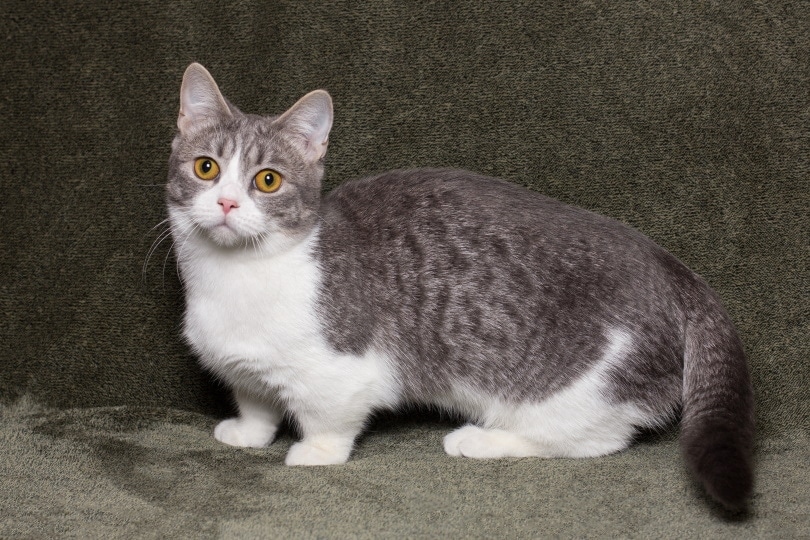
Summary
Munchkin cat breeds are known for their unique appearance. If well taken care of, they have an average lifespan of 12–15 years. Due to their genetic mutation and increased health risk, breeders have developed new varieties with other cat species that are very popular. Most of these breeds are relatively new, making them rare and hard to find.
Because of their recent breeding and experimentation, there’s still little information on them, especially about their health conditions. However, these existing breeds are unique, with outstanding fur coat features that distinguish them from typical regular cats.
If you are considering getting a Munchkin cat breed, several breeds are available. Most of them require little maintenance and will get along well with young kids and other pets in your home. Each breed is unique and distinct if you are looking for a stunning cat breed for your household.
Featured Image Credit: SV_zt, Shutterstock


